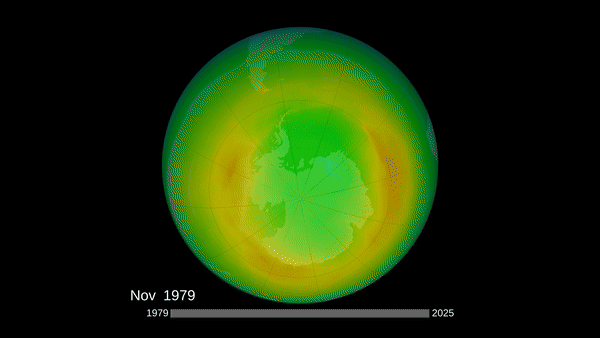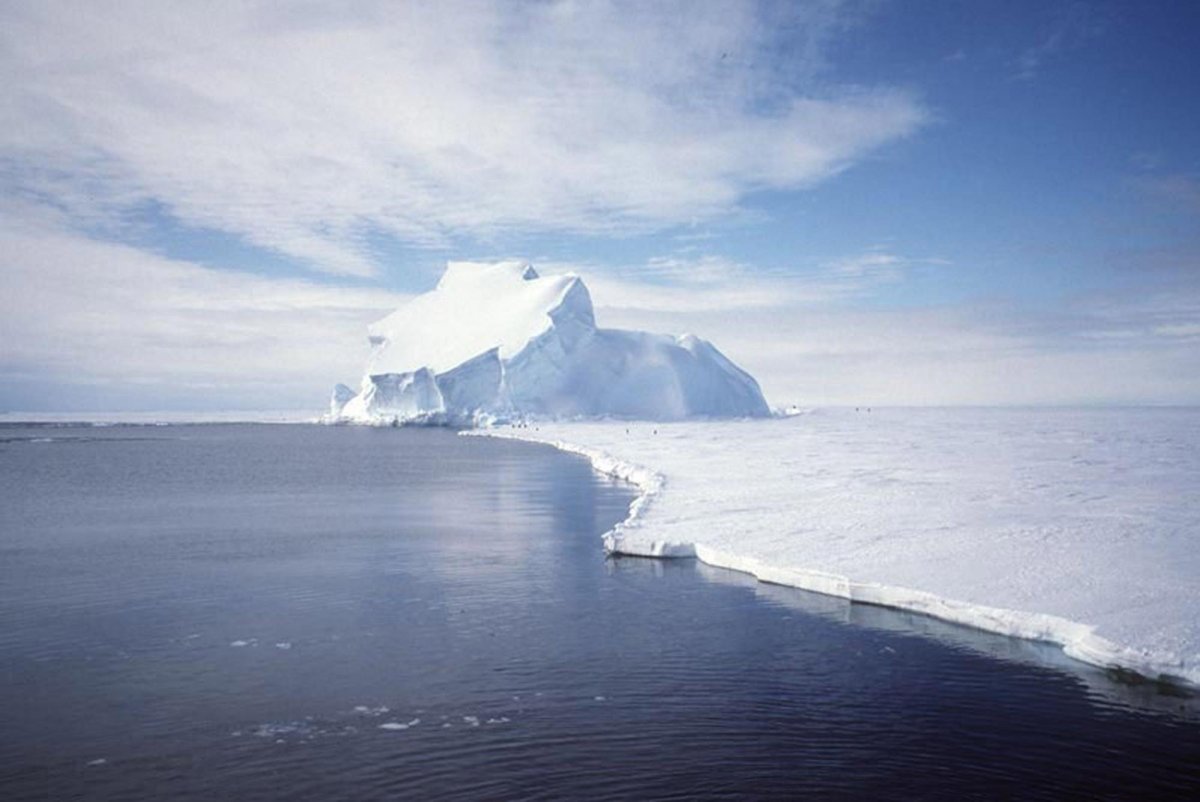NASA and NOAA have announced encouraging news for Earth’s climate: The 2025 Antarctic ozone hole is the fifth-smallest recorded in more than two decades.
According to both agencies, international efforts to phase out ozone-depleting chemicals are showing measurable success. The improvement stems largely from the Montreal Protocol, the landmark 1987 international treaty designed to phase out substances that harm the ozone layer.
NOAA reports that this year’s ozone hole ranks as the fifth smallest since 1992, the year the Montreal Protocol took effect. The agreement has been instrumental in reducing the presence of chlorofluorocarbons (CFCs) and other harmful compounds in the atmosphere.
According to NOAA, CFCs are found in aerosol sprays, blowing agents for foams and packing materials and as refrigerants.
 This illustration shows the size and shape of the ozone hole over the South Pole on the day of its 2025 maximum extent. Moderate ozone losses (in orange) are visible amid areas of more potent ozone losses (in red). Scientists describe the ozone &ldquohole&rdquo as the area in which ozone concentrations drop below the historical threshold of 220 Dobson Units. Illustration courtesy of NASA Earth Observatory
This illustration shows the size and shape of the ozone hole over the South Pole on the day of its 2025 maximum extent. Moderate ozone losses (in orange) are visible amid areas of more potent ozone losses (in red). Scientists describe the ozone &ldquohole&rdquo as the area in which ozone concentrations drop below the historical threshold of 220 Dobson Units. Illustration courtesy of NASA Earth Observatory
“Since peaking around the year 2000, levels of ozone-depleting substances in the Antarctic stratosphere have declined by about a third relative to pre-ozone-hole levels,” said Stephen Montzka, senior scientist with NOAA’s Global Monitoring Laboratory.
Scientists noted that during the height of this year’s ozone depletion season — from early September through mid-October — the ozone hole averaged about 7.23 million square miles in size. It is expected to close roughly three weeks earlier than the average seen over the past decade.
 Average ozone concentration during November from 1979 to 2025. Illustration courtesy of NASA
Average ozone concentration during November from 1979 to 2025. Illustration courtesy of NASA
“This year’s hole would have been more than one million square miles larger if there were still as much chlorine in the stratosphere as there was 25 years ago,” said Paul Newman, a senior scientist at the University of Maryland and leader of NASA’s ozone research team.
However, NASA and NOAA scientists caution that the recovery process is ongoing. Full restoration of the ozone layer is expected to take several more decades.

